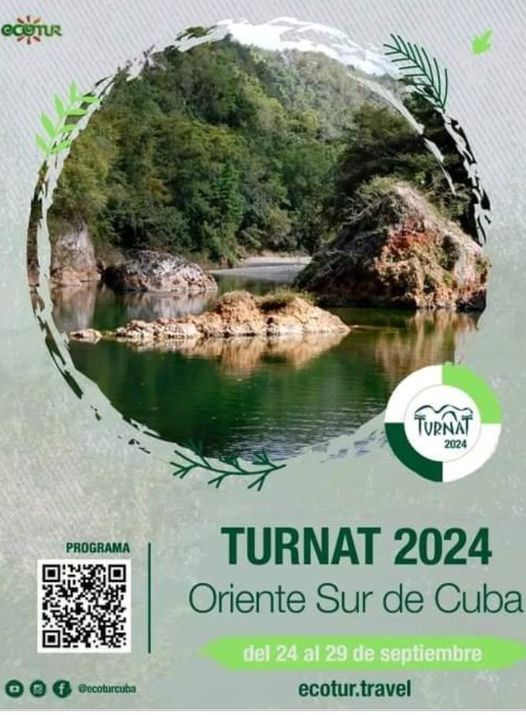 Guantanamo.-The Guantánamo Province is the easternmost in Cuba and today has great attractions for nature and adventure tourism, perfect for those attending Turnat 2024.
Guantanamo.-The Guantánamo Province is the easternmost in Cuba and today has great attractions for nature and adventure tourism, perfect for those attending Turnat 2024.
Precisely, this place is part of the program of the 14th edition of the International Nature Tourism Event (Turnat 2024). This context is benefited by the modality of circuit tourism, which the Ministry of Tourism (Mintur) of the island is taking up again with force.
Guantánamo has more than 500 thousand inhabitants, and 70 percent of the territory is covered by mountains. It also highlights in agriculture as its main economic activity, and also culture, history and tourist products linked to nature.
One of the province’s historians, Luis Figueres, once mentioned the Loma de la Gobernadora as an elevated viewpoint, when he recalled that Admiral Christopher Columbus had been there on April 30, 1494, during his second trip to the island.
This viewing point is actually located on Loma La Gobernadora, he stressed, better known by locals as Loma de La Herradura, 27 kilometers from Guantánamo, the provincial capital, on the road that connects Guantánamo-Mirador La Gobernadora and Baracoa.
However, the most outstanding stopover point for walks is in the Baracoa City, perhaps the most interesting city in all of Cuba, its stunningly beautiful natural surrounds. Lush verdant mountains, clear freshwater rivers and beaches, as considered by scholars; such is the case of its historian Alejandro Hartmann.
Christopher Columbus was the first European astonished when he arrived in November 27, 1492. He wrote in his Navigation Diary: The most beautiful thing in the world.
The Baracoa Municipality is bordered to the north by the Atlantic Ocean, to the south by Imías and Maisí, and to the west by Moa. It has an area of 97,600 hectares and a population of 78,214 inhabitants (2023), with a density of 84.5 inhabitants per square kilometer.
The main products of the region are coconut, cocoa and coffee, although since the end of the 1990s tourism has become one of its main sources of income due to its extraordinary beauty.
The city was founded on August 15, 1511 with the name of Our Lady of the Assumption of Baracoa by the Spanish conquistador Diego Velázquez, and any self-respecting traveler should visit it at least once on their journey through Cuba.